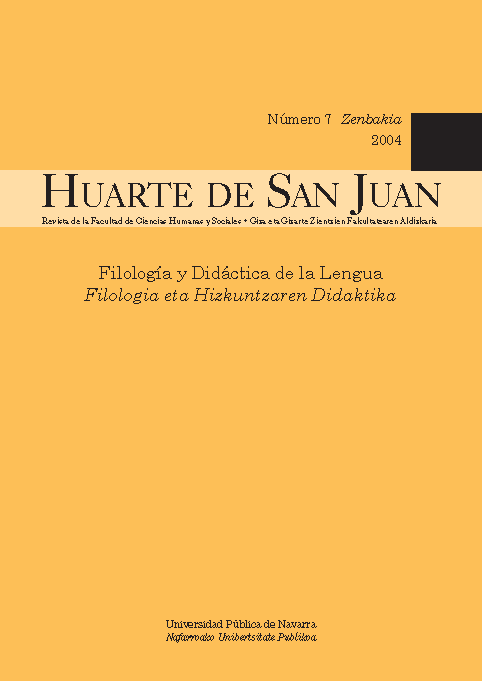Content and Language Integrated Learning Approach: Learning Science through English
Abstract
Recientemente, un número cada vez mayor de centros de educación primaria están considerando proponer experiencias en el ámbito de la enseñanza de contenidos curriculares a través de segundas lenguas o lenguas extranjeras (CLIL). Aunque en un principio, el objetivo a perseguir es el de mejorar la competencia en la lengua, sin embargo, es preciso aclarar que la enseñanza a través de contenidos tiene una finalidad doble: el desarrollo de la competencia lingüística junto con el desarrollo del conocimiento en una materia disciplinar. Las experiencias piloto existentes hasta la fecha han puesto de relieve ciertas cuestiones metodológicas concernientes a la enseñanza integrada de lengua y contenidos. Interrogantes referentes a cómo la lengua y las materias disciplinares se relacionan y cuales son las implicaciones didácticas.
Downloads
References
Eggins, S. (1994): An Introduction to Systemic Functional Linguistics, London, United Kingdom, Pinter Publishers.
Fruhauf, G.; Do Coyle & Ingeborg, C. (eds.) (1996): Teaching Content in a Foreign Language. Practice and Perspectives in European Bilingual Education, European Platform for Dutch Education.
Halliday, M.A.K. (1994): Functional Grammar, London, Edward Arnold.
Halliday & Martin (1993): Writing Science: Literacy and Discursive Power, The University of Pittsburgh Press.
Marsh, D.; Ennser, C. & Sygmund, D. (eds.) (1999): Pursuing Plurilingualism, Continuing Education Centre, University of Jyväskylä.
Martin, J.R. & Veel, R. (1998): Reading Science: Critical and functional perspectives on discourses of science, London, Routledge.
White paper (1995): Teaching and Learning. Towards a Cognitive Society, Brussels, European Commission
Downloads
Published
How to Cite
Issue
Section
License
All articles are published under a Creative Commons (BY-NC-ND 4.0) license. Each article will be assigned a DOI.
Authors retain copyright of their work and grant the journal the right to the first publication. Authors can sign additional agreements to non-exclusive distribution of the published version of the article (for example, in an institutional repository) as long as appropriate attribution to the original publication is provided. Articles can be uploaded to institutional repositories immediately after publication.
Electronic distribution of the articles (for example, academic social networks or personal webpages) is allowed and encouraged.
The journal reserves the right to publicise the work in social networks and other electronic means.







